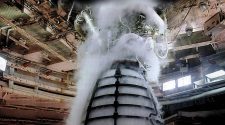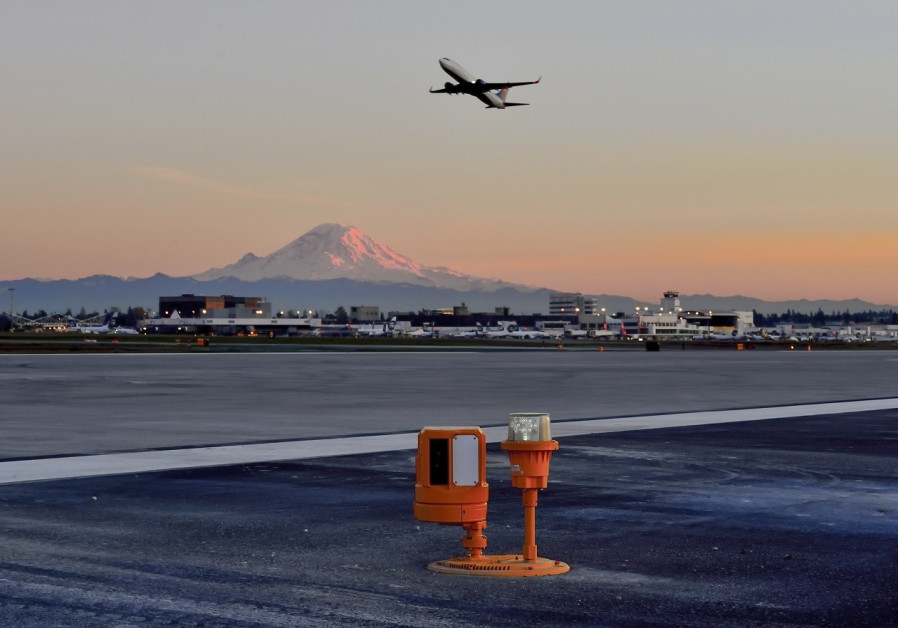Xsight Systems’ RunWize threat detection system at Seattle-Tacoma International Airport .
(photo credit: MONI SHAFIR)
Dear Reader,
As you can imagine, more people are reading The Jerusalem Post than ever before.
Nevertheless, traditional business models are no longer sustainable and high-quality publications,
like ours, are being forced to look for new ways to keep going. Unlike many other news organizations,
we have not put up a paywall. We want to keep our journalism open
and accessible and be able to keep providing you with news
and analysis from the frontlines of Israel, the Middle East and the Jewish World.
As one of our loyal readers, we ask you to be our partner.
For $5 a month you will receive access to the following:
- A user experience almost completely free of ads
- Access to our Premium Section
- Content from the award-winning Jerusalem Report and our monthly magazine to learn Hebrew – Ivrit
- A brand new ePaper featuring the daily newspaper as it appears in print in Israel
Help us grow and continue telling Israel’s story to the world.
Thank you,
Ronit Hasin-Hochman, CEO, Jerusalem Post Group
Yaakov Katz, Editor-in-Chief
UPGRADE YOUR JPOST EXPERIENCE FOR 5$ PER MONTH
Show me later
Beijing Daxing International Airport (BDIA), the Chinese capital’s vast aviation terminal due to open in September, has selected Rosh Ha’ayin-based Xsight Systems’ foreign object debris (FOD) detection solution to protect its east and north runways.
The $12 billion airport, home initially to four runways and a 0.31 million-square-meter terminal building, will use Xsight Systems’ RunWize threat detection solution to continuously monitor the runways and detect any debris or hazards.
By 2025, the phoenix-shaped airport is expected to accommodate 72 million passengers and two million tons of cargo annually.
In April, Beijing Capital International Airport – the second busiest in the world – also installed RunWize on its East runway. Last year, more than 100 million passengers traveled through the crowded airport, a number that was only surpassed by Hartsfield-Jackson Atlanta International Airport.
Seeking to foster rapid expansion of its aviation industry, Chinese authorities aim to have 450 airports in operation by 2035, requiring the commission of approximately 200 new airports.
Debris and other potential threats on runways, such as bird strikes, cost the global aviation industry an estimated $12 billion per year.
RunWize uses artificial intelligence-based image and radar processing algorithms to detect and assess threats on the runway for both planes taking off and landing, such as bird strikes and conditions increasing the danger of runway excursions.
The technology complies with regulatory requirements worldwide, while also providing tools to comply with the International Civil Aviation Organization’s upcoming Global Reporting Format, due to enter into force from November 2020.
“We are proud that Xsight’s global reputation as an industry leader is acknowledged by the Chinese aviation market,” said Xsight Systems CEO Alex Koren.
“As China is becoming the largest aviation market, with intensive growth in air traffic, there grows the need for a runway threat detection solution to boost both safety and capacity of airport runways.”
Other airports using RunWize’s technology include Boston Logan International Airport, Seattle-Tacoma International Airport, Ben-Gurion Airport and Bangkok Suvarnabhumi International.
The Defense Ministry has also acquired the RunWize system to install at Israel Air Force bases.
Join Jerusalem Post Premium Plus now for just $5 and upgrade your experience with an ads-free website and exclusive content. Click here>>

















Elon Musk Says Bill Gates has a $500 million short position in Tesla